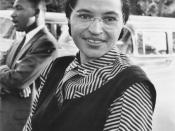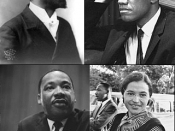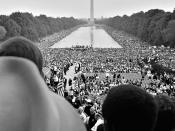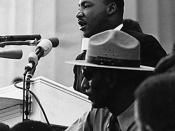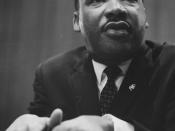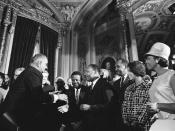While a wide range of art forms were associated with the Civil Rights movement, music certainly had the most impact on its early stages as it was a medium by which many, namely those being oppressed, could express their disdain for the status quo. The musicians involved with the movement came from a mixture of backgrounds and the music served as a source of empowerment for those who shared similar sentiments with those performing it. Being that jazz and blues were popular genres during that time, it was often played at music clubs throughout the United States.
The blues were developed in the rural southern United States, toward the end of the 19th century, and found a wider audience in the 1940s as blacks migrated to urban areas. Jazz music has dozens of variations and also utilizes elements from other genres. Albeit the fact that it is less vocal than blues, it was extraordinarily emotional.
The latter could be derived from its syncopation and the fact that it was frequently improvised (Hentoff). Its distinct strong rhythms and disregard for conventional sound allowed for jazz to flourish into a genre that is known for possessing radically unique characteristics.
Martin Luther King Jr. was once quoted as saying that "Jazz speaks for life. The blues tell the story of life's difficulties - and if you think for a moment, you realize that they take the hardest realities of life and put them into music, only to come out with some new hope or sense of triumph. This is triumphant music." A racially diverse audience listened to jazz and blues because it addressed a broad range of issues. At clubs, a proverbial melting pot of people would peacefully coexist given that they were there for the same reason - to listen to agreeable music. While jazz addressed a slew of issues, the blues often revolved around pressing issues of the time which could range anywhere from race to gender roles.
Granted that music, during that time, was a Caucasian male-dominated realm, it failed to dissuade women or those of African descent from contributing. Bessie Smith and Ma Rainey were iconic in the sense that they sang about relatively controversial topics. Rainey established the blues as women's music, and Smith was the most successful blues singer of her time (Davis 92). Their songs collectively expressed independence and assertiveness, challenged ideas of gender-based inferiority, and covered topics such as domestic abuse, prostitution, work, and jail in such a way as to create a social history of African Americans.
Overall, the jazz and blues helped hasten the Civil Rights movement given that it assisted in publicizing the injustices of the time and encouraged people to act on them. Even though a great deal of effort was expended into keeping the clubs segregated, aficionados continued to attend regardless of the backlash they experienced on behalf of their peers and the governing forces. Jazz is highly regarded as being one of the few original American art forms. It was a medium that all shared and enjoyed, and that connective power reinforced the call for unity of blacks during the civil rights struggle.
Works Cited:Davis, Francis. The History Of The Blues: The Roots, The Music, The People. Cambridge, MA: Da Capo, 2003. Print.
Eyerman, Ron, and Andrew Jamison. Music and Social Movements: Mobilizing Traditions in the Twentieth Century. Cambridge: Cambridge UP, 1998. Print.
Hentoff, Nat. "How Jazz Helped Hasten the Civil-Rights Movement." Wall Street Journal, 15 Jan. 2009. Web. 6 Oct. 2009. .
"Martin Luther King Speaks On Jazz." Humanity and the Importance of Jazz. Web. 07 Oct. 2009. .
